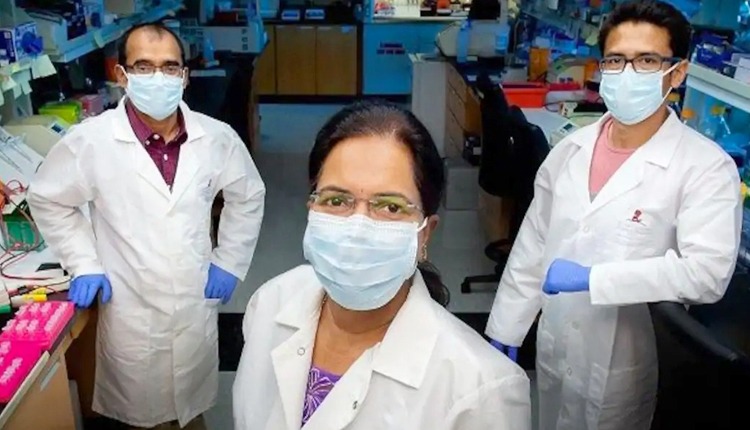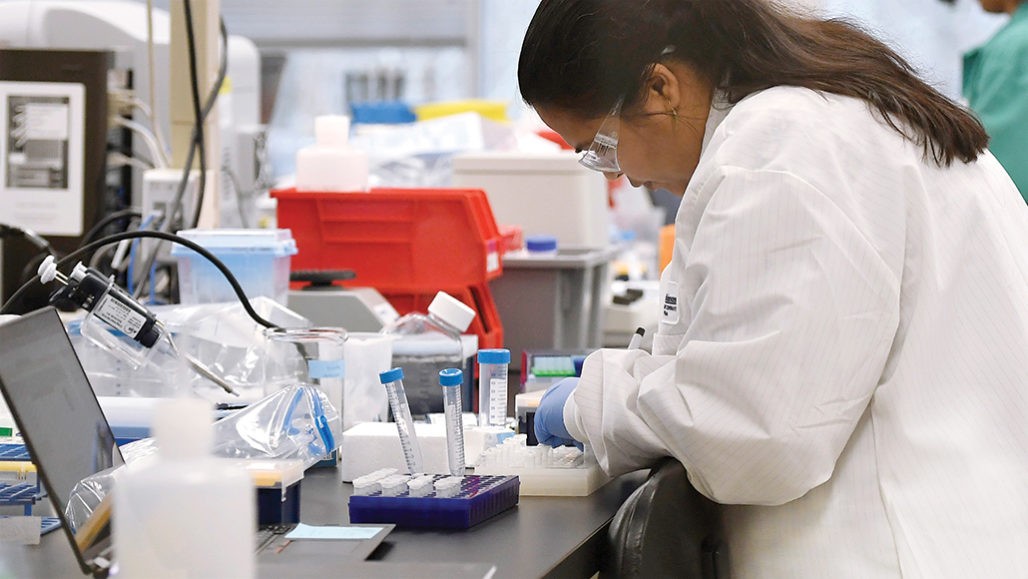Good News: The Indo-American Scientist Has Discovered A Potential Treatment To Prevent Coronavirus Deaths!

An Indo-American scientist has discovered a potential strategy to prevent life-threatening inflammation, lung damage, and organ failure in patients diagnosed with coronavirus.
The study, published online in the journal Cell, coming from the lab of Dr. Thirumala-Devi Kanneganti, where an Indian-born researcher at St. Jude Children’s Research Hospital in Tennessee identified the drugs after discovering an excessive inflammatory immune response associated with coronavirus infection causes tissue damage and multiple organ failure in mice by triggering the inflammatory cell death pathway.
The researchers explained how the inflammatory cell death signaling pathway works, leading to inherent therapies that can disrupt the process.
Understanding the mechanisms and pathways that lead to this inflammation is critical to formulating effective treatment strategies, said Kanneganti, vice-chair of the St Jude Department of Immunology.
Kanneganti was born and raised in Telangana. She received a bachelor’s degree in chemistry from Kakatia University in Warangal, majoring in zoology, chemistry, and botany.
Then, she obtained her degree in M.Sc and Ph.D. from Osmania University in India. Later, she joined St. Jude in 2007 in Memphis, Tennessee, the USA.
This research provides that understanding. We have also identified the specific cytokines that activate the inflammatory cell death pathway and have significant potential to treat the coronavirus infection and other highly fatal diseases, including sepsis, she said.

The other researchers are Parimal Samir, R K Subbarao Malireddi, Min Zheng, Shraddha Tuladhar, Balamurugan Sundaram, Balaji Banoth, Patrick Schreiner, Peter Vogel, Geoffrey Neale, and Evan Peter Williams, Lillian Zalduondo; and Richard Webby, of St. Jude; and Colleen Beth Jonsson, of the University of Tennessee Health Science Center.
The novel coronavirus is caused by the SARS-CoV-2 virus. The deadly infection has killed over 1 million people and sickened millions in less than a year. The infection is marked by elevated blood levels of various cytokines.
These small proteins are mainly secreted by immune cells to ensure a rapid response to curb the virus. Some cytokines can also trigger inflammation.
St. Jude said in a statement that the term “cytokine storm” has been used to define the sharp rise in cytokine levels in the blood and other immune changes in sepsis, coronavirus, and also observed in inflammatory diseases (such as hemophagocytic lymphohistiocytosis {HLH}).
However, the specific pathways that trigger the cytokine storm and subsequent inflammation, lung injury, and organ failure in coronavirus infection and the other diseases were not cleared.
It also lacks the cellular and molecular mechanisms that fully define the cytokine storm.
Kanneganti’s group focused on a select set of the highest levels of cytokines in coronavirus patients.
Scientists say that there is no single cytokine-induced cell death in innate immune cells.
The findings link TNF-α(alpha) and IFN-γ(gamma)-induced inflammatory cell death to coronavirus, Kanneganti said.
She further stated: The results also show that the therapies for this cytokine combination are a candidate for rapid clinical trials. It can not only treat coronavirus infection but also treat several other fatal diseases related to cytokine storms.
We were very excited to connect these points to understand how TNF-α and IFN-γ cause PANoptosis, said a scientist and co-first author, Rajendra Karki, in the Kanneganti laboratory.
Bhesh Raj Sharma, the co-author and a scientist at Kanneganti’s laboratory added that, indeed, understanding how PANoptosis contributes to illness and mortality is crucial for identifying the potential therapies.
Eight months ago, the world was plunged into the COVID-19 pandemic, and people are waiting for the deadly virus vaccine with bated breath.
We can hope that the coronavirus treatment discovered by the Indian-American scientist will become a potential strategy to curb the deadly virus.




